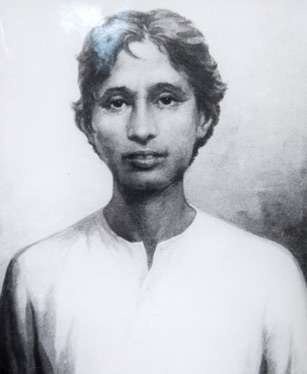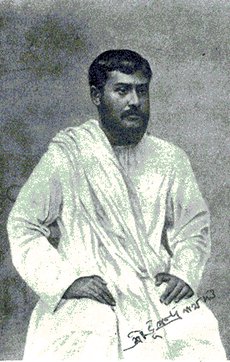Khudiram Bose – The forgotten Hero, who has been the youngest martyr in India’s Freedom struggle



Khudiram Bose, one of the youngest martyrs in the struggle for freedom, born on December 3, 1889 in a small village, Habibpur near Midnapore. His father Trailokyanath Basu was the revenue agent for Nadazol province, and Khudiram was the 4th child in a family of 3 daughters. As he was the only son, two others dying in infancy, his mother Lakshmipriya Devi, as per the prevailing custom, symbolically sold him to her eldest daughter Apurupa for 3 handfuls of “Khud” or foodgrain. This in a way gave him his name, and he was later bought up by his eldest sister, after his parents passed away when he was just 6 years old. He was admitted to the Hamilton High School in Tamluk by his brother in law Amritalal Roy.
Even before reaching adolescence, Khudiram had the reputation of being a dare devil rebel. The speeches of Aurobindo and Bhagini Nivedita, in 1902 and 1903, when they visited Midnapore, fired him up with a burning desire to join the revolutionary activities, when he was just 12. When his brother in law was transferred to Midnapore, he enrolled at the Medinipur Collegiate School, and that proved to be a turning point in his life. He became part of the akhara that was active in socio political sphere, and earned every one’s appreciation for his enthusiasm, adventorus spirit. He was also inspired by his teacher Satyendranath Bose, as well as the teachings of the Gita.

Douglas Kingsford, the chief Magistrate of Alipore’s Presidency court, was the one who ruthlessly targeted Jugantar Patrika, had overseen the trial of it’s editor and sent him to prison. The editor of Jugantar Patrika, Bhupendranath Datta was none other than the youngest brother of Swami Vivekananda, and a close associate of Aurobindo and Barindra Ghosh. The arrests made Jugantar Patrika much more defiant and it struck back with more stinging editorials against the British Raj. Jugantar became widely popular and also helped to spread the Anushilan Samiti’s ideology of revolutionary nationalism, especially among the youth in Bengal. Kingsford earned more ire, when he ordered a young revolutionary Sushil Sen to be flogged in public. He now became the target of the revolutionaries.
Khudiram and Prafulla Chaki, taking up the aliases of Haren Sarkar and Dinesh Chandra Roy, took residence in a dharamshala in Muzaffarpur run by Kishorimohan Bandopadhyaya to assasinate the magistrate Douglas Kingsford. our men were assigned to guard Kingsford’s home, while Khudiram and Prafulla Chaki, taking up the aliases of Haren Sarkar and Dinesh Chandra Roy, took residence in a dharamshala in Muzaffarpur run by Kishorimohan Bandopadhyaya. After closely tracking the movements of Kingsford, over the next couple of days, they were ready to execute their plans, and choose the evening of April 29. They began to survey the park opposite the British club in Muzaffarpur where Kingsford was a regular visitor, and were promptly noticed by a constable. However they managed to evade the police and intelligence officials for over 2 weeks.
Kingsford finished his bridge game at the club, and left in a horse drawn carriage. However in another identical carriage, the wife and daughter of Pringle Kennedy, a leading lawyer of Muzaffarpur had left earlier. And both Prafulla, Khudiram mistook this one to be that of Kingsford’s. As the carriage neared the home of Kingsford, they ran towards it and threw the bombs. It was a terrible explosion destroying the carriage, and leaving both mother and daughter with severe injuries to which they succumbed later in in the hospital.
By now the entire town was agog with the news of the attack, and the police were on full alert. Khudiram made his escape through the countryside on foot, and after walking non stop for 40 km, he reached a station called Waini on May 1, 1908 morning, exhausted and tired. His appearance immediately alerted two constables Fateh Singh and Sheo Pershad Singh, and when he asked for some water, he was caught. The frail Khudiram had no chance against the two burly constables, and his struggle to escape was in vain. 37 rounds of ammunition, a railway map, Rs 30 in cash was found, his fate was sealed.
Though Khudiram, was prepared for his death sentence, his defense lawyers persuaded him to file an appeal to commute it to life imprisonment. The High Court hearing once again took place on July 8, and this time it was Narendra Kumar Basu who came to Khudiram’s defense. By now he had become a hero for the entire country, and the trial fired up the nation. Narendra challenged the verdict on the following grounds, as per Article 164 of IPC, the accused had to submit his statement in front of a first class magistrate which Woodman was not. He also pointed out that the accused was not questioned in his native language, Bengali, which was a violation of Art 364. Finally he contended that since Prafulla Chaki was the actual bomb thrower, and the one who committed suicide, Khudiram was only an accomplice, and hence his sentence could be commuted.
Sadly on 13th July, 1908, inspite of Narendra Kumar’s best efforts, the Judges conferred the death penalty on Khudiram Bose. Even a request to the Governor General was turned down, and his hanging was confirmed for August 11, 1908. Kolkata erupted in protest, especially the students and youth taking to the streets, against the hanging.
Source: Khudiram Bose
DISCLAIMER: The author is solely responsible for the views expressed in this article. The author carries the responsibility for citing and/or licensing of images utilized within the text.
